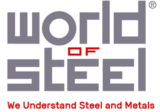Tinplate and the Environment
Tinplate and the Environment
In June 2018, recycling of steel packaging in Europe has reached a new high of 79,5% and is well on track to reach the industry’s self-imposed target of 80% by 2020, according to figures issued by APEAL, the Association of European Producers of Steel for Packaging.
This new all-time high, representing data from 2016, means that for every 10 items of steel packaging put on the European market, close to 8 have been collected, effectively recycled and made available for the manufacture of new steel products.
With an increase of 2 percentage points on 2015 data, steel for packaging’s recycling rate is pulling ever further away from that of other packaging materials.
It’s a real example of circular economy and confirms steel as Europe’s most recycled packaging material for the 12th consecutive year. The methodology and data sources used by APEAL to calculate the recycling rate have been independently reviewed, audited and certified by energy and waste specialist consultancy, Eunomia.
As a permanent material, steel can be recycled forever with no loss of quality. 80% EU steel recycling average by 2020 has been our industry objective since 2012 and to be so close to achieving it early is in no small part thanks to the combined efforts of industry, value chain and consumers across the EU
Steel’s exceptionally high recycling rate also provides the following savings for every tonne of steel cans recycled:
- 1.5 tonnes of iron ore
- 0.5 tonnes of coal
- 40% of water required in production
Steel is the only common metal that is magnetic and this makes it the easiest and most economical packaging material to recover wherever it arises in the waste stream – and it can be routinely recovered using simple electromagnets.
Local authorities are keen to include steel in their recycling plans because it can be cost-effectively recovered through a number of different schemes, helping to achieve Government recycling targets. Steel cans may be recovered through one or more of the following systems
Over recent years, the walls of steel cans have become thinner and the overall weight of a drinks can has been reduced by 40% in the past 30 years, in turn decreasing the weight of packaging produced. This is another excellent example of how steel cans have minimised their impact on the environment by the use of less raw material resources.
Steel cans reduce waste by protecting products and keeping food and drink clean, safe and fresh.
- Detinning of tinplate
Although detinning technology is available, it is not necessary to remove the tin layer from the surface of the steel can before it is recycled. Tin usage in tinplate manufacture has reduced and many steel makers in Europe and the rest of the world now routinely recycle all tinplate packaging, back into new steel without detinning.
Steel makers have carried out sophisticated computer modelling in order to estimate the likely levels of tin that may build up over time in the steel melt as a result of recycling.
The excellent fabricability of tinplate, its solderability, attractive appearance, and corrosion resistance have led to a diversity of other usIn recent years, steel producers have monitored the amount of tin in the steel melt and have carried out extensive studies on the effects on properties of steel products made with tinplate scrap. They do not envisage any detrimental effects on properties. As a result of all of the technical work, the industry is committed to recycling as much steel packaging scrap as necessary for the achievement of recycling targets in the future.
es besides packaging, although none of these individual uses represents a large tonnage outlet. A number of automotive applications exist, such as in the manufacture of engine gaskets, brake line tubes and oil filters.
- Source: The International Tin Association (formerly ITRI Ltd)
